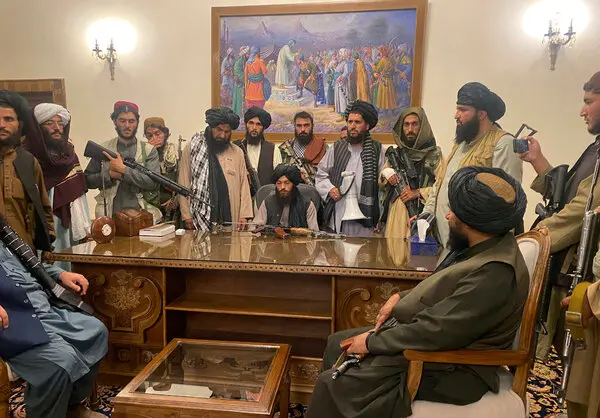The Taliban first came to power in Afghanistan in 1996, ruling until 2001 when they were ousted by a US-led coalition following the 9/11 attacks. During their initial regime, the Taliban were known for their strict interpretation of Sharia law, which included severe restrictions on women’s rights, public executions, and harsh punishments. After a 20-year insurgency against the Afghan government and international forces, the Taliban regained control of Afghanistan in August 2021, following the withdrawal of US and NATO troops.

Governance and Political Differences
1. International Relations and Recognition
- Previous Regime (1996-2001): The Taliban’s first regime was diplomatically isolated, recognized only by Pakistan, Saudi Arabia, and the United Arab Emirates. Their governance was marked by a lack of engagement with the international community and an antagonistic stance toward Western nations.
- Current Regime (2021-Present): The present Taliban regime seeks broader international recognition and diplomatic engagement. They have expressed willingness to establish relations with multiple countries, including China, Russia, and regional neighbors. However, as of now, no country has officially recognized their government. The Taliban are also trying to assure the world that they will not allow Afghan territory to be used for terrorist activities, although skepticism remains high.
2. Internal Governance
- Previous Regime: The 1996-2001 regime was characterized by centralized, autocratic rule with the religious police (Amr bil-Ma’ruf) enforcing strict societal norms. The leadership, particularly Mullah Omar, wielded absolute power.
- Current Regime: The new Taliban government claims to be more inclusive, although evidence suggests otherwise. They have established a caretaker government predominantly comprising Taliban leaders with little to no representation of other political factions or ethnic groups. The structure remains heavily centralized, but there is an apparent attempt to present a more moderate face to the world.
Social Conditions
1. Women’s Rights and Education
- Previous Regime: Under the first Taliban rule, women were banned from working, attending school, or leaving the house without a male guardian. Education for girls was virtually nonexistent.
- Current Regime: Initially, the Taliban promised a more progressive stance on women’s rights, including allowing women to work and girls to attend school “under Islamic principles.” However, these promises have largely not been fulfilled. Restrictions have been reimposed on women’s employment, education beyond a certain age, and movement. In many areas, secondary schools for girls remain closed, and women’s participation in public life is severely restricted.
2. Media and Free Speech
- Previous Regime: The Taliban banned television, music, and many forms of artistic expression. The media was tightly controlled, with severe punishments for dissent.
- Current Regime: While the Taliban initially allowed some media operations to continue, restrictions have gradually tightened. Journalists face significant risks, including harassment, detention, and violence. Many media outlets have shut down due to fear and economic pressures. The Taliban have issued guidelines that severely limit free expression and press freedom.
3. Human Rights
- Previous Regime: Human rights abuses were widespread, including public executions, amputations, and stoning. Ethnic and religious minorities faced severe persecution.
- Current Regime: Human rights organizations report continued abuses under the current regime. Reports of extrajudicial killings, arbitrary detentions, and persecution of minorities, particularly the Hazara community, persist. The judicial system remains opaque and arbitrary, and there is little accountability for abuses.
Economic Conditions
1. Economic Policy and Challenges
- Previous Regime: The economy during the first Taliban rule was largely stagnant and isolated, heavily reliant on opium production. International sanctions exacerbated economic woes.
- Current Regime: The current Taliban regime inherited an economy in crisis, exacerbated by the sudden withdrawal of international aid, which previously constituted a significant portion of the national budget. The Taliban have expressed interest in developing Afghanistan’s natural resources and have engaged in talks with regional powers for economic cooperation. However, the lack of recognition, continued sanctions, and frozen foreign reserves pose significant challenges.
2. Employment and Livelihoods
- Previous Regime: Under the first regime, economic opportunities were limited, and poverty was widespread. The formal economy was minimal, and many people relied on subsistence farming and informal trade.
- Current Regime: The economic situation remains dire. Unemployment is high, and many government employees have not been paid regularly. The banking sector is struggling, with severe liquidity issues. Inflation has increased the cost of basic goods, pushing more people into poverty. International sanctions and the freeze on Afghan assets abroad have further strained the economy.
3. Humanitarian Situation
- Previous Regime: Humanitarian conditions were poor, with limited access to health care, education, and basic services. The international community provided some aid, but it was often insufficient and poorly distributed.
- Current Regime: The humanitarian situation has deteriorated significantly. Millions of Afghans face food insecurity, and the health care system is on the brink of collapse. The UN and various NGOs are providing aid, but access is complicated by security concerns and restrictions imposed by the Taliban. The harsh winter and ongoing conflict further exacerbate the crisis.
Future Prospects
The future of Afghanistan under the Taliban remains uncertain. The regime’s attempts to gain international recognition and legitimacy are hampered by its unwillingness to make substantive reforms, particularly regarding human rights and inclusive governance. The economic situation is dire, with little immediate prospect for improvement without significant international engagement and investment. Social conditions, particularly for women and minorities, remain a major concern.
Conclusion
In summary, while the current Taliban regime shows some differences in rhetoric and a few changes in governance compared to their previous rule, the fundamental aspects of their governance and policies remain largely unchanged. The promises of moderation and inclusivity have not translated into reality, and the social and economic conditions in Afghanistan are severely challenging. The international community’s response and the Taliban’s willingness to implement genuine reforms will significantly influence Afghanistan’s trajectory in the coming years.
4o





Leave a Reply